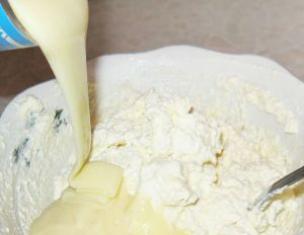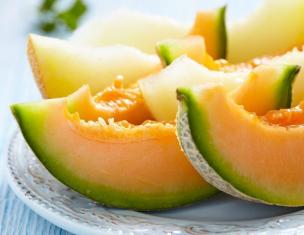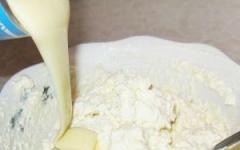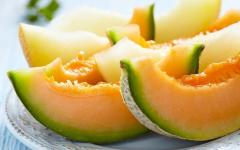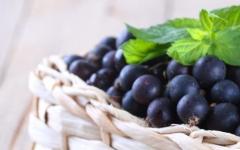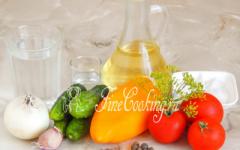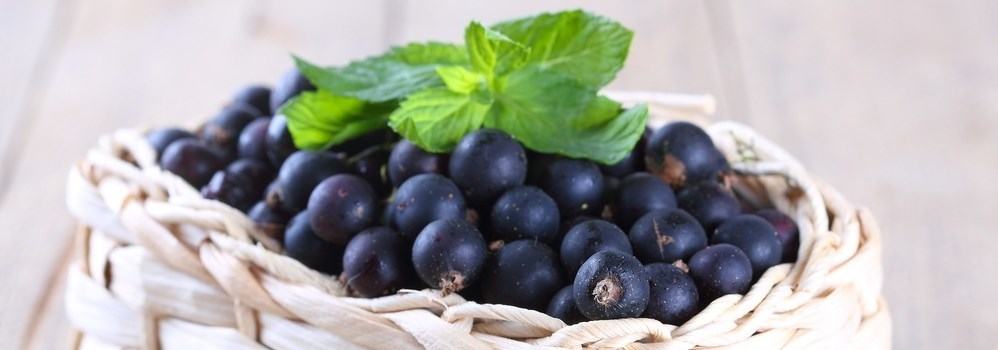
Currant is a simple, familiar and unpretentious berry. This is how we are used to thinking about it. However, it can not only surprise us, but even delight doctors and biologists. Familiarize yourself with the following information about currants that will allow you to rediscover them for yourself.
- Scientists say that currants will be richer in vitamins, the colder the climatic conditions in which they live.
- Currants are a close relative of gooseberries, so to speak, their little sister. Both plants belong to the Saxifraga family.
- You can find currants in abundance on almost all continents of the Earth, only in Antarctica and Australia you cannot find them.
- In total, 150 species of wild currants are known today.
- Unripe currants contain four times more active vitamin C than fully ripe ones. It turned out that the vitamin content in currant berries decreases as they ripen and decreases significantly if the berry is overripe.
- The Latin name for currants is Ribes. This is what the ancient Arabs called rhubarb, without which any food seemed bland to them. Not finding it in conquered Spain, they got out of the situation by replacing it with currants, which were given the same name for the characteristic sour taste that was so familiar to them.
- Before becoming an ordinary garden berry, currants were considered a monastic berry. Monks widely used it both as food and as a medicine.
- Currants are not only black, white and red; there are bushes of yellow, green and even purple and orange currants in nature.
- If we talk about the benefits of currants, then its leaves (although chewing them are not as pleasant as a juicy berry) are not very inferior to berries in their properties and vitamin C content. A tablespoon of crushed and dried currant leaves is equivalent to a whole lemon in terms of the amount of this vitamin.
- Berries from a currant bush growing in the shade will not be as healthy as berries drenched in sunlight. It is necessary for the beneficial substances in currants to reach their maximum concentration.
- Vitamin B5 (pantothenic acid), which is responsible not only for immunity and the body’s resistance to allergic manifestations, but also for the healthy appearance of hair and skin, is also found in currants. 100 g of currant berries contain 0.4 g.
- Brewing tea from currant leaves (fresh or dried) is extremely useful for adults and children. This drink activates the brain and improves memory properties.
- Currant leaves are placed in jars with pickles and marinades not only for beauty and flavoring, they prevent food spoilage and enrich them with vitamin C.
- In Rus', the name of currant was derived from the word “stench”, due to the strongly pronounced characteristic smell, especially of black currant.
- 100 g of currants contain only 60 kcal, so you can safely enjoy them even if you follow strict diets.
- It is recommended to include currants in the diet of those whose work involves radiation or other harmful production, since this berry is a powerful remedy that can remove radioisotopes from the human body.
- Unfortunately, not everyone can eat currants without fear. Those suffering from gastritis with increased secretion should treat it with caution and restrictions.
- If you want to stock up on this healthy berry for the winter, then you can prepare it in two ways - drying and freezing. But it should be dried not in the oven, but in the open air. You can also grind currants with sugar, put them in jars and store them in the refrigerator.
- The composition of berries of different shades differs from each other, taking this fact into account, children are recommended to lean on black currants, adults on red currants, and older people on white currants.
- Many varieties of currants are honey plants. The honey collected from them will turn out to be a very useful remedy, both therapeutic and prophylactic.
Initially, red currants were grown exclusively for medicinal purposes; therefore, Western European pharmacists from ancient times were well aware of the healing properties of scarlet currant berries. Now this beautiful frost-resistant crop grows in the Czech Republic, Germany, France, the Netherlands, Belgium, Great Britain, and Austria.
In Russia, this garden deciduous shrub began to be cultivated from the 11th century, mainly in monasteries (for example, in Novgorod and Pskov). Records of this were preserved in chronicles. This is how red currants found their niche in Russian food culture and folk medicine. Then they began to grow it in estates and gardens. Siberia is considered the homeland of currants, and currently the Volga region, southern Russia, the Urals, the middle zone and even the Far East are famous for their high yields of bright and healthy berries. It is known that up to 60% of the world's currants are grown in our country.
The currant bush is a hardy perennial, and with proper care (it does not tolerate shade) and good watering, it can bring joy to more than one generation of summer residents and successfully bear fruit for up to 20 years in a row. Currants bring their first small harvest in the second year, and from one mature bush you can harvest from 3-4 to 7-9 kg. Flowering begins in May, and the fruits ripen in July.
In the “wild” form there are up to 150 species of this shrub. In modern Russian catalogs for gardeners, there are up to 70 different varieties of red currants, including quite exotic varieties - with colorless, white, pink, garnet-red or dark, almost black berries. The most popular modern varieties with excellent taste are now:
- Red currant: Generous, Ural beauty, Seryozhka, Rachnovskaya, Rassvetnaya, Early sweet, Gift of summer, Lights of the Urals, Nadezhda, Natalie, Alpha, Valentinovka, Viksne, Konstantinovskaya.
- White currants: Yuterborgskaya, Smolyaninovskaya, White Fairy, Minusinskaya white.
- Pink currant: Rose, Jumping.
Black, white and red “varieties” of currant berries can be found in the garden at the same time - from unripe ones, but more saturated with vitamin C, to delicious ripe varietal fruits. That is why you need to know about some of the nuances and differences of these cultures.
- The Latin name for currant “Ribes” comes from... the Arabic name for rhubarb (“ribas”). It is known that during the conquest of Spain in 711, the Arabs tried the sour red berries, the taste of which vaguely reminded them of rhubarb, which was familiar to their diet. In this amazing way, this name was officially assigned to all types of currants.
- If you carefully examine the different types of currants, you will notice a real rainbow of colors - in addition to the well-known three varieties, there are also yellow orange, purple and even green (ripe!) currants. A distinctive feature of berries is not only color, but also taste, as well as biochemical composition. Thus, the “American” red currant, surprisingly sweet in taste, is black in color, and its pulp resembles semolina porridge in appearance.
- It’s not for nothing that unripe green currants have their “fans” - they contain 4 times more active vitamin C, which protects against infections and diseases and effectively supports the immune system. As they ripen, the “activity” and concentration of vitamins in the berries decreases, and when overripe, the fruits become completely useless.
Health berry
Despite the fact that, thanks to the development of chemistry and pharmaceuticals, many medical achievements began to be scientifically substantiated only in the 19th and 20th centuries, since ancient times people have known the benefits of red currants and what medicinal qualities are inherent in them. Thus, the use of this scarlet berry in its raw form, juices and fruit drinks from it is indicated for such diseases and conditions as:
- heart and blood vessel diseases;
- hypovitaminosis of vitamin C (100 g of currants contain up to 25 mg of this vitamin!), weakened immunity;
- fever, colds, ARVI, inflammatory diseases of the throat, nasopharynx;
- decreased appetite, gastrointestinal depression;
- dry mouth, thirst, nausea.
The multifunctional effect of currant preparations on the human body is possible due to the rich chemical composition of ripe scarlet berries. The substances contained in red currants have the following beneficial properties:
- The unique substance oxycoumarin, which is found only in the “red” variety of the berry, helps normalize the process of blood clotting, which is useful for the prevention of strokes, heart attacks, and thrombosis.
- Due to the high content of pectins, harmful cholesterol leaves the body, which is beneficial for preventing the appearance of vascular “plaques” and, as a result, atherosclerosis. Also, organic acids and pectins neutralize the effects of increased background radiation.
- Red currant has a good choleretic and diuretic effect, relieves swelling, effectively increases metabolism and cleanses the intestines.
- Natural antioxidants (vitamins A, C, E, selenium) help fight the formation of cancer cells and slow down the rapid aging processes of body cells.
In addition to these beneficial substances, red currant juice and pulp contain flavonoids, catechins, anthocyanins, vitamin H - biotin (2.5 mcg), vitamin PP (0.3 mg), mono- and disaccharides (7.7 g), dietary fiber (3 .5 g), saturated and unsaturated fatty acids (0.1 g each), B vitamins, nicotinic acid, iron (0.9 mg), iodine, calcium (36 mg), sodium (21 mg), phosphorus (33 mg), magnesium (17 mg), potassium (up to 275 mg), as well as vitamin K, which is involved in the blood clotting process.
Red currants for expectant mothers
Despite this rather rich biochemical composition, it is known that red currants do not cause allergies, so during the season they can be useful for the nutrition of pregnant women. Fresh berry juice is an effective means of combating early toxicosis, stomach discomfort and nausea.
Tip: The juice of this berry has whitening properties, which can be useful for those who, due to an “interesting” situation, have developed pigment spots on their face and body. During breastfeeding, hair loss increases; masks made from red currant juice will help regulate this process and speed up hair renewal.
Contraindications
Despite the obvious benefits of red currants for maintaining human health, we must not forget about the harm that its use can cause to an organism already affected by the disease. Contraindications to taking this berry rich in fruit acids are:
- in the acute stage - gastritis, gastrointestinal ulcers;
- hepatitis;
- sensitivity of tooth enamel;
- hemophilia, low blood cell coagulation.
Medicinal properties and excellent taste
It is known that every disease has its own cure. In the case of red currants, there are also certain medicinal “preferences” and patterns. Thus, the use of jams and tea is indicated to alleviate the condition of hypertension, gastritis, and suppressed immunity. Here are a few recipes for such healthy and tasty “preparations”.
Recipe for tonic tea for hypertension
You will need: dry leaves (1 tbsp), fresh or frozen currants (2 tbsp), rosemary (1 sprig), mint (2 sprigs), boiling water (500 ml).
Preparation: Grind the berries into a puree. Pour boiling water over the herbal raw material in a teapot, add grated currants, let it brew for 10 minutes. Drink 2-3 cups a day, adding honey to taste.
Redcurrant compote recipe
You will need: currants (500 g), sugar (250 g), water (2 l).
Preparation: Rinse the berries and leave to drain. Boil water in a saucepan, add sugar and, after dissolving, add berries. Boil for 2-5 minutes, turn off the heat and leave to cool under the lid. As it steeps, the compote becomes tastier.
Tip: You can add other fruits to redcurrant compote: gooseberries, cranberries, apples. It is reasonable to replace sugar with honey.
Redcurrant juice recipe
You will need: red currant berries (500 g), sugar (50 g), water (1.5 l).
Preparation: Crush the washed berries with a pestle and rub through a sieve - you should get about 150-200 ml of juice. Place the remaining cake into a saucepan, add water, add sugar and, after boiling, boil for 5 minutes. Cool the broth completely. When serving, pour juice (25-50 g) into a glass, add sweet broth, garnish with a sprig of fresh currants.
Tip: You can wipe not fresh, but slightly scalded currants (dip in boiling water for 2 minutes). Then the berry broth will be more saturated.
Eating the berries fresh is the best way to saturate the body with the beneficial nutrients for which red currants are famous. However, a significant part of the vitamins is also preserved as a result of processing the berries - during freezing, canning, preparing drinks, jams, jellies, desserts and other delicacies.
Currant is a popular berry in Russia. Both black and red are respected; their bush has its rightful place in the country. But a curious summer resident may be interested in some facts about her that can be used to his advantage.
We all know that jam, syrups, marmalade, liqueurs, and liqueurs are made wonderfully from this berry. But what other good properties does it have?

It is better to grow currants in cold regions of the country.
Of course, its harvest is harvested everywhere, but the most vitamins are contained in those berries that grew in harsh climatic conditions. It turns out that Siberia is one of the most favorable locations for this. Summer residents of Siberia, allocate more space for this berry bush!
The largest variety of currant
The Vigorous variety boasts the largest berries. The weight of one can reach up to 8 grams, and it was bred in Gorno-Altaisk.

Where did the name Currant come from?
From the Slavic language Currant is an odorous, strong and pungent odor, even a stench. But it’s true: this culture has a unique unforgettable aroma. Abroad, the word comes from "Ribas", which means "sour". Apparently the one who gave the first name was unlucky to run into sour berries.
In general, if you are a fan of this berry, then you are convinced that it is not in vain. And if you are still thinking about how much space to give to currants on your plot, then know - more.
Tags: ,
Black, red and white currants belong to the same gooseberry family. Black currants are more of a wild crop, while red and white currants are cultivated hybrids. I present to you interesting facts about currants. Approximately 50-60% of the world's currants are grown and harvested in Russia.
Red currants contain less carbohydrates, which reduces their calorie content, which is equal to 50 kilocalories. And 100 grams of black currant contains 60 kilocalories.
Red currant contains many acids, vitamin C (responsible for the elasticity of blood vessels), vitamin A (responsible for vision and skin renewal), B vitamins (especially B5 and B12). Also increasing its value is the presence of coarse, indigestible fibers and pectin, which turns into a jelly-like mass in the intestines and removes many harmful substances from the body.
But the content of anthocyanins in currants - these are powerful antioxidants - makes this product simply invaluable. Anthocyanins have the ability to reduce oxidative reactions. After all, it is oxidized cholesterol that can destroy the walls of blood vessels and form atherosclerotic plaques. And reducing its oxidation reduces activity and reduces its harmful effects.
Since currants contain a lot of acids, their consumption should be reduced for those who suffer from high acidity of gastric juice.
Red currants practically do not cause allergic reactions.
How to choose the right currants?
Choose those berries that have less damage, dirt and so that all the berries are on the branches, this is a guarantee of the freshness of the product.
How to properly store currants?
It is better to store freshly picked currants on a branch in a suspended state, this greatly extends their shelf life. Should be stored in a cool place protected from light.
The berries can also be washed and dried in the oven at a temperature of 45-50 degrees (if the temperature is higher, this will lead to the destruction of vitamin C), and then stored in a glass container. In this form, the berries can be stored for up to six months.
You can freeze currants. To do this, place the washed berries on a baking sheet and place in the freezer. With this option, currants do not lose any vitamins.
When defrosting, it is better to first place it in the refrigerator for 4-5 hours.
Currants can also be stored in the form of jelly. It needs to be wiped, and the released pectin will contribute to the formation of a thick mass. This way it can be stored for a month.
Any heat treatment leads to the loss of all vitamins and nutrients contained in currants. Therefore, it is better to eat it fresh.



